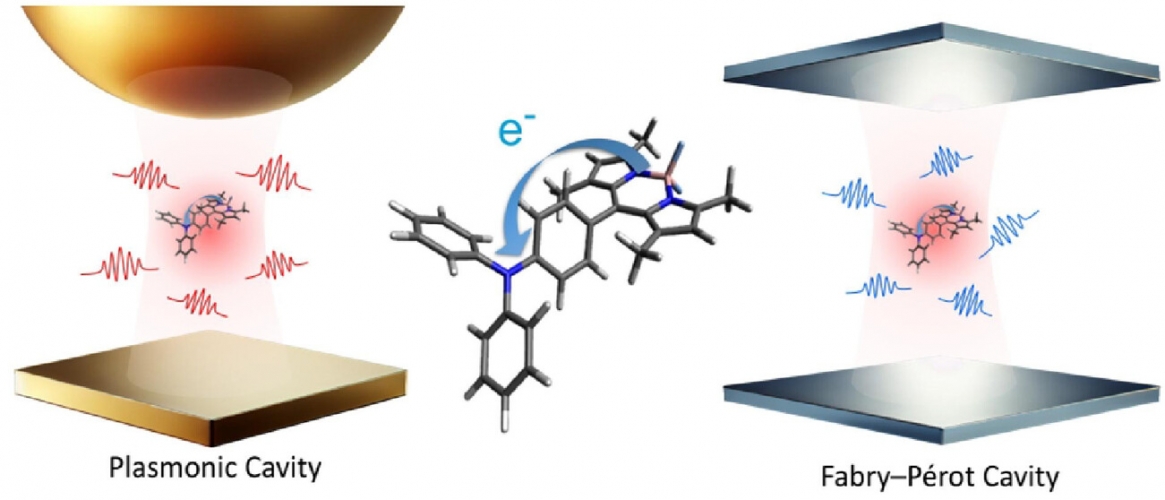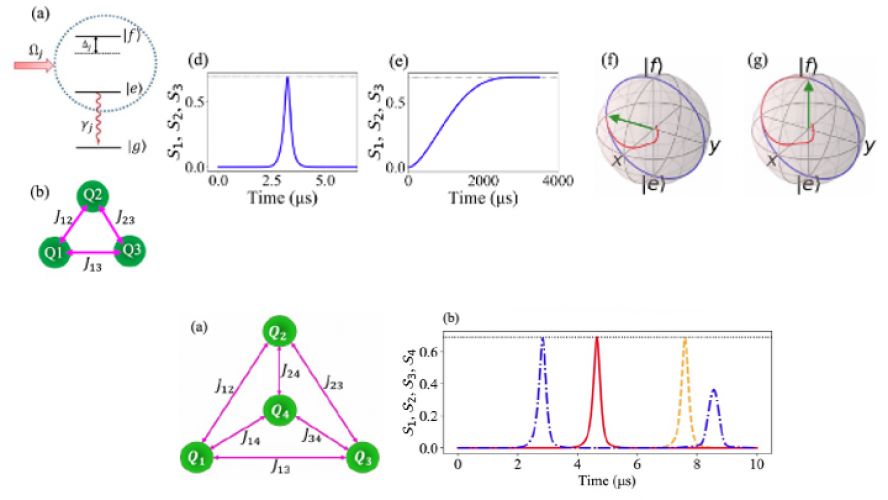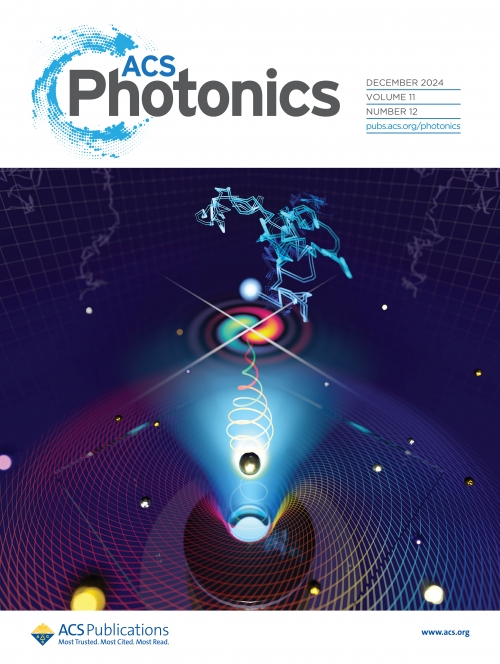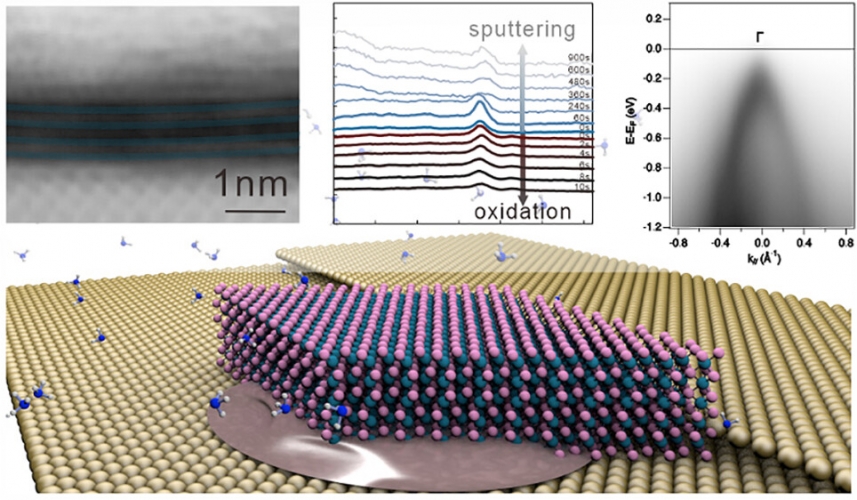重要研究成果
許良彥 博士
(2025)
J. Phys. Chem. Lett., 16, 1604−1619 (2025).

The interaction between light and molecules under quantum electrodynamics (QED) has long been less emphasized in physical chemistry, as semiclassical theories have dominated due to their relative simplicity. Recent experimental advances in polariton chemistry highlight the need for a theoretical framework that transcends traditional cavity QED and molecular QED models. Macroscopic QED is presented as a unified framework that seamlessly incorporates infinite photonic modes and dielectric environments, enabling applications to systems involving plasmon polaritons and cavity photons. This Perspective demonstrates the applicability of macroscopic QED to chemical phenomena through breakthroughs in molecular fluorescence, resonance energy transfer, and electron transfer. The macroscopic QED framework not only resolves the limitations of classical theories in physical chemistry but also achieves parameter-free predictions of experimental results, bridging quantum optics and material science. By addressing theoretical bottlenecks and unveiling new mechanisms, macroscopic QED establishes itself as an indispensable tool for studying QED effects on chemical systems.
任祥華 博士
(2025)
Quantum Sci. Technol. 10 025021 (2025).

Open quantum systems are susceptible to losses in information, energy, and particles due to their surrounding environment. One novel strategy to mitigate these losses is to transform them into advantages for quantum technologies through tailored non-Hermitian quantum systems. In this work, we theoretically propose a fast generation of multipartite entanglement in non-Hermitian qubits. Our findings reveal that weakly coupled non-Hermitian qubits can accelerate multiparty entanglement generation by thousands of times compared to Hermitian qubits, in particular when approaching the 2^n-th order exceptional points of n qubits in the PT-symmetric regime. Furthermore, we show that Hermitian qubits can generate GHZ states with a high fidelity more than 0.9995 in a timescale comparable to that of non-Hermitian qubits, but at the expense of intense driving and large coupling constant. Our approach is scalable to a large number of qubits, presenting a promising pathway for advancing quantum technologies through the non-Hermiticity and higher-order exceptional points in many-body quantum systems.
許良彥 博士
(2025)
J. Chem. Phys. 162, 034107 (2025).
![本研究題目Non-Adiabatic Quantum Electrodynamic Effects on Electron–Nucleus–Photon Systems: Single Photonic Mode vs Infinite Photonic Modes [Feature Article]的代表性圖片 本研究題目Non-Adiabatic Quantum Electrodynamic Effects on Electron–Nucleus–Photon Systems: Single Photonic Mode vs Infinite Photonic Modes [Feature Article]的代表性圖片](../image/research/org/research-301.jpeg)
The quantum-electrodynamic non-adiabatic emission (QED-NAE) is a type of radiatively assisted vibronic de-excitation due to electromagnetic vacuum fluctuations on non-adiabatic processes. Building on our previous work [Tsai et al., J. Phys. Chem. Lett. 14, 5924 (2023)], we extend the theory of the QED-NAE rate from a single cavity photonic mode to infinite photonic modes and calculate the QED-NAE rates of 9-cyanoanthracene at the first-principles level. To avoid the confusion, the quantum electrodynamic internal conversion process is renamed as “QED-NAE” in our present work. According to our theory, we identify three key factors influencing the QED-NAE processes: light–matter coupling strength (mode volume), mass-weighted orientation factor, and photonic density of states. The mode volume is the primary factor causing rate differences between the two scenarios. In a single cavity with a small mode volume, strong light–matter coupling strength boosts QED-NAE rates. In contrast, in free space with infinite photonic modes, weak coupling strength significantly reduces these rates. From a single cavity photonic mode to infinite photonic modes, the mass-weighted orientation factor only causes an 8π/3-fold increase in the QED-NAE rate. In free space, the photonic density of state exhibits a flat and quadratic distribution, which slightly reduces the QED-NAE rate. Our study shows that cavities can significantly enhance non-adiabatic QED effects while providing a robust analysis demonstrating that QED vibronic effects can be safely ignored in free space.
謝佳龍 博士
(2024)
ACS Photonics 11(12), 5239–5250 (2024)

Interferometric scattering (iSCAT) microscopy is currently among the most powerful techniques available for achieving high-sensitivity single-particle localization. This capability is realized through homodyne detection, where interference with a reference wave offers the promise of exceptionally precise three-dimensional (3D) localization. However, the practical application of iSCAT to 3D tracking has been hampered by rapid oscillations in the signal-to-noise ratio (SNR) as particles move along the axial direction. In this study, we introduce a novel strategy based on back pupil plane engineering, wherein a spiral phase mask is used to redistribute the phase of the scattered field of the particle uniformly across phase space, thus ensuring consistent SNR as the particle moves throughout the focal volume. Our findings demonstrate that this modified spiral phase iSCAT exhibits greatly enhanced localizability characteristics. Additionally, the uniform phase distribution enables reliable characterization of the particle’s optical properties regardless of its position. We substantiate our theoretical results with numerical and experimental demonstrations, showcasing the practical application of this approach for high-precision, ultrahigh-speed (20,000 frames per second) 3D tracking and polarizability measurement of freely diffusing nanoparticles as small as 20 nm.
謝雅萍 博士
(2024)
Nano Letters 24, 1, 67 (2024)

Two-dimensional transition metal nitrides offer intriguing possibilities for achieving novel electronic and mechanical functionality owing to their distinctive and tunable bonding characteristics compared to other 2D materials. We demonstrate here the enabling effects of strong bonding on the morphology and functionality of 2D tungsten nitrides. The employed bottom-up synthesis experienced a unique substrate stabilization effect beyond van-der-Waals epitaxy that favored W5N6 over lower metal nitrides. Comprehensive structural and electronic characterization reveals that monolayer W5N6 can be synthesized at large scale and shows semimetallic behavior with an intriguing indirect band structure. Moreover, the material exhibits exceptional resilience against mechanical damage and chemical reactions. Leveraging these electronic properties and robustness, we demonstrate the application of W5N6 as atomic-scale dry etch stops that allow the integration of high-performance 2D materials contacts. These findings highlight the potential of 2D transition metal nitrides for realizing advanced electronic devices and functional interfaces.
目前位置:關於本所 / 重要研究成果 / 第 1 頁
中央研究院 原子與分子科學研究所版權所有 |
個人隱私權聲明 |
保有個資檔案公開項目彙整表 |
行動版
地址: 106319 台北市羅斯福路四段一號 或 106923 臺北臺大郵局 第23-166號信箱
電話:886-2-2362-0212 傳真:886-2-2362-0200 電子郵件:iamspublic@gate.sinica.edu.tw
最後更新於 2025-04-30 10:05:09
地址: 106319 台北市羅斯福路四段一號 或 106923 臺北臺大郵局 第23-166號信箱
電話:886-2-2362-0212 傳真:886-2-2362-0200 電子郵件:iamspublic@gate.sinica.edu.tw
最後更新於 2025-04-30 10:05:09
 中央研究院 原子與分子科學研究所
中央研究院 原子與分子科學研究所
